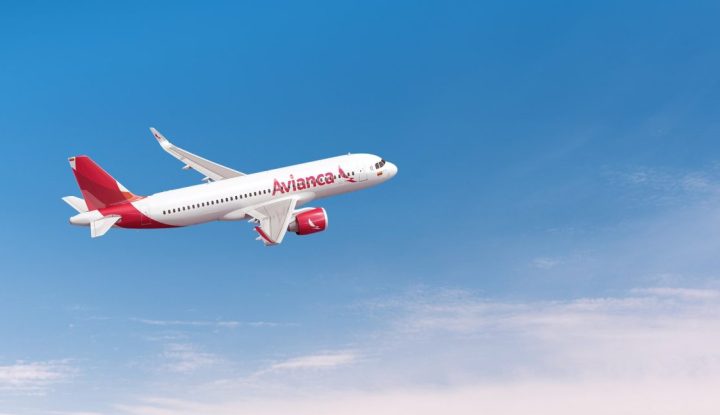“NDC has created a vehicle for dialog between the travel chain actors. Together, we can bring unparalleled innovation and choice benefiting to our corporate customers and business travellers. NDC is a milestone on a greater journey.” — Antoine Boatwright, Senior Vice President Innovation, Reed & Mackay2. How will Sabre (and others) deliver NDC at scale? The ability to scale will result from Sabre’s partner-based approach to solution design. We are actively collaborating with stakeholders from across the travel ecosystem – from airlines and agencies, to OBTs, TMCs and corporations – to ensure that we understand their needs. We will continue to participate actively in industry forums to help define and evolve the IATA NDC schemas so that they support scaled operations. It is critical that our solutions support end-to-end agency workflows – particularly mid- and back-office integrations – to drive scale. Collaboration also involves working with airline and technology partners to ensure that response times align with expectations and that unique NDC content becomes more commonplace. 3. How will NDC content affect agency workflows? Sabre’s Beyond NDC solutions are being designed to account for end-to-end agency workflows, which includes mid- and back-office integrations. The goal is to minimize effects on agency workflows. For example, when NDC offers become available in consultant workspace, Sabre Red 360, that content will appear in the existing user interface (UI) which has been designed to standardize how different types of content are displayed. 4. Corporations are curious how they should prepare their organization for NDC. Does it require updates to current travel policies? Also, how will the personalized experiences NDC promises be delivered for a corporation’s managed travel program? Corporate travel managers should be actively educating themselves about NDC, whether that is through Sabre, or via engagement at IATA forums. The potential for airlines to create more dynamic offers will have implications for corporate travel programs. Travel managers should ask their airline, agency and technology partners about their respective NDC plans and if there will be any changes to commercial and contractual terms. They will likely need to update their travel policies to account for NDC offers. There are no hard and fast guidelines at this time, but corporate travel managers should be incorporating the topic of NDC into their strategic planning discussions. Regarding the delivery of personalized NDC experiences, the answer to this question has not crystallized. It will also likely vary from corporation to corporation. There is a potential for corporations to negotiate “corporate bundles” that could be provided via NDC-enabled channels. A corporate travel manager (CTM) would negotiate which types of content would be included. As a result, these new sorts of offers would fall within corporate policy and could potentially reduce leakage and enhance cost controls. 5. Does the cost of implementation and maintenance outweigh the benefit to early adoption of NDC content? The answer to this question will vary on a case-by-case basis. We would encourage our customers to be proactive in asking questions, gathering more information and becoming more informed about NDC, because this topic is evolving quickly. Even if an organization is not allocating funding or developers, scenario planning for when and how to engage is our strong recommendation. Developing an NDC strategy and plan now will help prevent customers from being caught flat-footed and feeling a few steps behind when NDC volumes begin to grow over the next year or two. As the conversation around IATA’s NDC continues to evolve, you can count on Sabre to be an industry leader in developing scalable solutions to deliver a win-win-win for the travel ecosystem. Visit our Beyond NDC website for the latest news from Sabre.
Article
STXでのNDC関連トップ5トピック
Sabre recently wrapped up its flagship customer event, Sabre Technology Exchange (STX) in Las Vegas. Over 1,500 travel industry and technology leaders from around the world gathered for three days to learn about Sabre’s strategy, solutions and “moon shot” goal of ushering in a new era of personalized travel by 2025. Emphasizing “power in partnership,” Sabre leaders described how our evolution to a cloud-based, platform-powered and technology-driven company is enabling us to shape the future of travel retailing, distribution and fulfillment.
As expected, there was a lot of interest in IATA’s New Distribution Capability (NDC) standards. Over the course of 16 sessions that spanned the frontline, developer and executive conference tracks, over 800 registrants learned from the Beyond NDC team about our strategy, progress to date and roadmap. We took copious notes and wanted to share some themes that emerged from the sessions:
1. As airlines begin to distribute content via NDC, what will that look like?
Initially, we are seeing ATPCO-filed content mirrored in NDC channels. However, over time, NDC offers will evolve to include flight (e.g., free WiFi) and non-flight (e.g., lounge access) ancillaries. Offer bundle components will increasingly be personalized, at least at a persona, or customer-segment level. The analysis of data – from trip context, to traveler preferences and market conditions – will fuel personalization, which could include dynamic content and pricing. Airlines will define their content distribution strategies, (i.e., which offers are distributed through various channels), on a case-by-case basis.
This personalization will be powered by a technology stack that supports modern standards around offers and orders. By building NDC-enabled offer and order management in the Sabre Commercial Platform, airlines can incorporate decision science into offer creation, ensure offer and order integrity, and enable seamless servicing even during disruptions.






